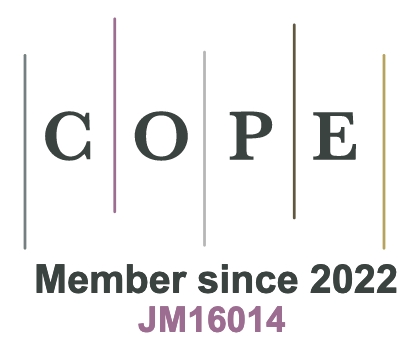REFERENCES
1. Sha W, Guo Y, Yuan Q, et al. Artificial intelligence to power the future of materials science and engineering. Adv Intell Syst 2020;2:1900143.
2. Choudhary K, DeCost B, Chen C, et al. Recent advances and applications of deep learning methods in materials science. npj Comput Mater 2022;8:59.
3. Behler J, Parrinello M. Generalized neural-network representation of high-dimensional potential-energy surfaces. Phys Rev Lett 2007;98:146401.
4. Schütt KT, Kindermans PJ, Sauceda HE, Chmiela S, Tkatchenko A, Müller KR. SchNet: a continuous-filter convolutional neural network for modeling quantum interactions. In: Proceedings of the 31st International Conference on Neural Information Processing Systems. Curran Associates Inc.; 2017. pp. 992-1002. Available from: https://dl.acm.org/doi/abs/10.5555/3294771.3294866. [Last accessed on 28 Mar 2024].
5. Xie T, Grossman JC. Crystal graph convolutional neural networks for an accurate and interpretable prediction of material properties. Phys Rev Lett 2018;120:145301.
6. Choudhary K, DeCost B. Atomistic line graph neural network for improved materials property predictions. npj Comput Mater 2021;7:185.
7. Chen C, Ye W, Zuo Y, Zheng C, Ong SP. Graph networks as a universal machine learning framework for molecules and crystals. Chem Mater 2019;31:3564-72.
8. Zuo Y, Qin M, Chen C, et al. Accelerating materials discovery with Bayesian optimization and graph deep learning. Mater Today 2021;51:126-35.
9. Conway BE, Tilak BV. Interfacial processes involving electrocatalytic evolution and oxidation of H2, and the role of chemisorbed H. Electrochim Acta 2002;47:3571-94.
10. Loffreda D. Theoretical insight of adsorption thermodynamics of multifunctional molecules on metal surfaces. Surf Sci 2006;600:2103-12.
11. Thomas N, Smidt T, Kearnes S, et al. Tensor field networks: rotation- and translation-equivariant neural networks for 3D point clouds. arXiv.[Preprint] 18 May 2018 [accessed on 2024 Mar 28]. Available from: https://arxiv.org/abs/1802.08219.
12. Batzner S, Musaelian A, Sun L, et al. E(3)-equivariant graph neural networks for data-efficient and accurate interatomic potentials. Nat Commun 2022;13:2453.
13. Brandstetter J, Hesselink R, van der Pol E, Bekkers EJ, Welling M. Geometric and physical quantities improve E(3) equivariant message passing. arXiv.[Preprint] 26 Mar 2022 [accessed on 2024 Mar 28]. Available from: https://arxiv.org/abs/2110.02905.
14. Batatia I, Kovács DP, Simm GNC, Ortner C, Csányi G. MACE: higher order equivariant message passing neural networks for fast and accurate force fields. arXiv.[Preprint] 26 Jan 2023 [accessed on 2024 Mar 28]. Available from: https://arxiv.org/abs/2206.07697.
15. Musaelian A, Batzner S, Johansson A, et al. Learning local equivariant representations for large-scale atomistic dynamics. Nat Commun 2023;14:579.
16. Liao YL, Smidt T. Equiformer: equivariant graph attention transformer for 3D atomistic graphs. arXiv.[Preprint] 28 Feb 2023 [accessed on 2024 Mar 28]. Available from: https://arxiv.org/abs/2206.11990.
17. Zitnick CL, Das A, Kolluru A, et al. Spherical channels for modeling atomic interactions. arXiv.[Preprint] 13 Oct 2022 [accessed on 2024 Mar 28]. Available from: https://arxiv.org/abs/2206.14331.
18. Chanussot L, Das A, Goyal S, et al. Open catalyst 2020 (OC20) dataset and community challenges. ACS Catal 2021;11:6059-72.
19. Passaro S, Zitnick CL. Reducing SO(3) convolutions to SO(2) for efficient equivariant GNNs. arXiv.[Preprint] 14 Jun 2023 [accessed on 2024 Mar 28]. Available from: https://arxiv.org/abs/2302.03655.
20. Lan J, Palizhati A, Shuaibi M, et al. AdsorbML: a leap in efficiency for adsorption energy calculations using generalizable machine learning potentials. npj Comput Mater 2023;9:172.
21. Wang Z, Wang C, Zhao S, et al. Heterogeneous relational message passing networks for molecular dynamics simulations. npj Comput Mater 2022;8:53.
22. Zhong Y, Yu H, Su M, Gong X, Xiang H. Transferable equivariant graph neural networks for the Hamiltonians of molecules and solids. npj Comput Mater 2023;9:182.
23. Al Zoubi W, Assfour B, Allaf AW, Leoni S, Kang JH, Ko YG. Experimental and theoretical investigation of high-entropy-alloy/support as a catalyst for reduction reactions. J Energy Chem 2023;81:132-42.
24. Liu W, Tkatchenko A, Scheffler M. Modeling adsorption and reactions of organic molecules at metal surfaces. Acc Chem Res 2014;47:3369-77.
25. Shee J, Rudshteyn B, Arthur EJ, Zhang S, Reichman DR, Friesner RA. On achieving high accuracy in quantum chemical calculations of 3d transition metal-containing systems: a comparison of auxiliary-field quantum monte carlo with coupled cluster, density functional theory, and experiment for diatomic molecules. J Chem Theory Comput 2019;15:2346-58.
26. Ghanekar PG, Deshpande S, Greeley J. Adsorbate chemical environment-based machine learning framework for heterogeneous catalysis. Nat Commun 2022;13:5788.
27. Yang Z, Gao W. Applications of machine learning in alloy catalysts: rational selection and future development of descriptors. Adv Sci 2022;9:2106043.
28. George J, Hautier G. Chemist versus machine: traditional knowledge versus machine learning techniques. Trends Chem 2021;3:86-95.
29. Zebari RR, Abdulazeez AM, Zeebaree DQ, Zebari DA, Saeed JN. A comprehensive review of dimensionality reduction techniques for feature selection and feature extraction. J Appl Sci Technol Trends 2020;1:56-70.
30. Otchere DA, Ganat TOA, Gholami R, Ridha S. Application of supervised machine learning paradigms in the prediction of petroleum reservoir properties: comparative analysis of ANN and SVM models. J Petrol Sci Eng 2021;200:108182.
31. Huang X, Ma S, Zhao CY, Wang H, Ju S. Exploring high thermal conductivity polymers via interpretable machine learning with physical descriptors. npj Comput Mater 2023;9:191.
32. Li CN, Liang HP, Zhang X, Lin Z, Wei SH. Graph deep learning accelerated efficient crystal structure search and feature extraction. npj Comput Mater 2023;9:176.
33. Isayev O, Fourches D, Muratov EN, et al. Materials cartography: representing and mining materials space using structural and electronic fingerprints. Chem Mater 2015;27:735-43.
34. Ward L, Agrawal A, Choudhary A, Wolverton C. A general-purpose machine learning framework for predicting properties of inorganic materials. npj Comput Mater 2016;2:16028.
35. Schütt KT, Glawe H, Brockherde F, Sanna A, Müller KR, Gross EKU. How to represent crystal structures for machine learning: towards fast prediction of electronic properties. Phys Rev B 2014;89:205118.
36. Luo Y, Du X, Wu L, Wang Y, Li J, Ricardez-Sandoval L. Machine-learning-accelerated screening of double-atom/cluster electrocatalysts for the oxygen reduction reaction. J Phys Chem C 2023;127:20372-84.
37. Tran K, Ulissi ZW. Active learning across intermetallics to guide discovery of electrocatalysts for CO2 reduction and H2 evolution. Nat Catal 2018;1:696-703.
38. Calle-Vallejo F, Martínez JI, García-Lastra JM, Sautet P, Loffreda D. Fast prediction of adsorption properties for platinum nanocatalysts with generalized coordination numbers. Angew Chem Int Edit 2014;53:8316-9.
39. Cao S, Luo Y, Li T, Li J, Wu L, Liu G. Machine learning assisted screening of doped metals phosphides electrocatalyst towards efficient hydrogen evolution reaction. Mol Catal 2023;551:113625.
40. Calle-Vallejo F, Tymoczko J, Colic V, et al. Finding optimal surface sites on heterogeneous catalysts by counting nearest neighbors. Science 2015;350:185-9.
41. Zhou C, Chen C, Hu P, Wang H. Topology-determined structural genes enable data-driven discovery and intelligent design of potential metal oxides for inert C–H bond activation. J Am Chem Soc 2023;145:21897-903.
42. Li X, Chiong R, Hu Z, Page AJ. A graph neural network model with local environment pooling for predicting adsorption energies. Comput Theor Chem 2023;1226:114161.
43. Li Y, Zhu R, Wang Y, Feng L, Liu Y. Center-environment deep transfer machine learning across crystal structures: from spinel oxides to perovskite oxides. npj Comput Mater 2023;9:109.
44. Chen R, Liu F, Tang Y, et al. Combined first-principles and machine learning study of the initial growth of carbon nanomaterials on metal surfaces. Appl Surf Sci 2022;586:152762.
45. Yang T, Zhou J, Song TT, Shen L, Feng YP, Yang M. High-throughput identification of exfoliable two-dimensional materials with active basal planes for hydrogen evolution. ACS Energy Lett 2020;5:2313-21.
46. Zhou J, Shen L, Costa MD, et al. 2DMatPedia, an open computational database of two-dimensional materials from top-down and bottom-up approaches. Sci Data 2019;6:86.
47. Tran K, Palizhati A, Back S, Ulissi ZW. Dynamic workflows for routine materials discovery in surface science. J Chem Inf Model 2018;58:2392-400.
48. Tanemura M, Ogawa T, Ogita N. A new algorithm for three-dimensional voronoi tessellation. J Comput Phys 1983;51:191-207.
49. Saal JE, Kirklin S, Aykol M, Meredig B, Wolverton C. Materials design and discovery with high-throughput density functional theory: the open quantum materials database (OQMD). JOM 2013;65:1501-9.
50. Li Z, Wang S, Chin WS, Achenie LE, Xin H. High-throughput screening of bimetallic catalysts enabled by machine learning. J Mate Chem A 2017;5:24131-8.
51. Calle-Vallejo F, Loffreda D, Koper MTM, Sautet P. Introducing structural sensitivity into adsorption-energy scaling relations by means of coordination numbers. Nat Chem 2015;7:403-10.
52. Cao Z, Dan Y, Xiong Z, et al. Convolutional neural networks for crystal material property prediction using hybrid orbital-field matrix and magpie descriptors. Crystals 2019;9:191.
54. Cover T, Hart P. Nearest neighbor pattern classification. IEEE Trans Inform Theory 1967;13:21-7.
56. He K, Zhang X, Ren S, Sun J. Deep residual learning for image recognition. In: 2016 IEEE Conference on Computer Vision and Pattern Recognition (CVPR); 2016 Jun 27-30; Las Vegas, USA. IEEE; 2016. pp. 770–8.







